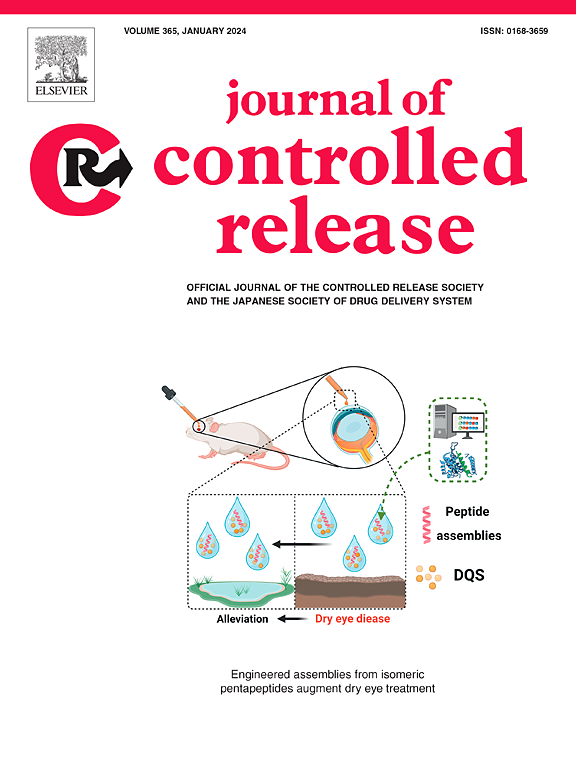Reversing hypoxia-induced immune evasion in tumors to enhance cancer immunotherapy
IF 10.5
1区 医学
Q1 CHEMISTRY, MULTIDISCIPLINARY
引用次数: 0
Abstract
The strategy of inducing tumors to release damage-associated molecular patterns (DAMPs) to trigger immunogenic cell death has garnered significant attention in cancer therapy. However, the hypoxic tumor microenvironment, which is often programmed by cancer cells, results in the release of immunosuppressive DAMPs (iDAMPs), which substantially influence antitumor immune responses. In this study, we developed a redox-responsive carboxymethyl chitosan (CMC)-based nanoplatform for the sequential delivery of a hypoxia-inducible factor 1-α (HIF-1α) inhibitor, 3-(5′-hydroxymethyl-2-furyl)-1-benzylindazole (YC-1), and the chemotherapeutic agent doxorubicin (DOX), aimed to restore therapeutic sensitization and immunostimulation in tumors. The preferential release of YC-1 effectively targets the HIF-1α/cyclooxygenase-2 (COX-2) axis, significantly reducing the secretion of immunosuppressive factor prostaglandin E2 (PGE2), thereby resensitizing tumors to T cell-mediated immunity. Additionally, YC-1 mitigates hypoxia-induced tumor chemoresistance by inhibiting the HIF-1α/P-glycoprotein (P-gp) axis, further improving the immunotherapeutic efficacy of DOX. Our work demonstrates that regulating hypoxia-induced immunosuppressive factors in tumors contributes to the inhibition of both primary and metastatic tumors, offering a promising approach to enhance immunotherapies.

求助全文
约1分钟内获得全文
求助全文
来源期刊

Journal of Controlled Release
医学-化学综合
CiteScore
18.50
自引率
5.60%
发文量
700
审稿时长
39 days
期刊介绍:
The Journal of Controlled Release (JCR) proudly serves as the Official Journal of the Controlled Release Society and the Japan Society of Drug Delivery System.
Dedicated to the broad field of delivery science and technology, JCR publishes high-quality research articles covering drug delivery systems and all facets of formulations. This includes the physicochemical and biological properties of drugs, design and characterization of dosage forms, release mechanisms, in vivo testing, and formulation research and development across pharmaceutical, diagnostic, agricultural, environmental, cosmetic, and food industries.
Priority is given to manuscripts that contribute to the fundamental understanding of principles or demonstrate the advantages of novel technologies in terms of safety and efficacy over current clinical standards. JCR strives to be a leading platform for advancements in delivery science and technology.
 求助内容:
求助内容: 应助结果提醒方式:
应助结果提醒方式:


